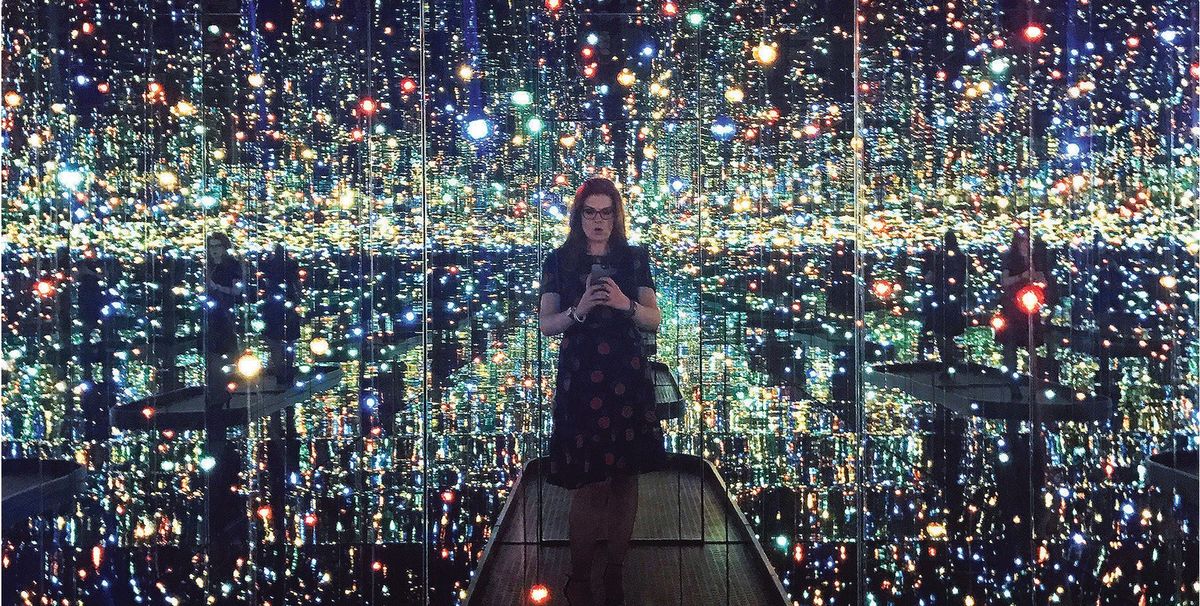When David Zwirner Gallery in New York presented two of Yayoi Kusama’s Infinity Rooms in 2013, visitors queued for hours to get a 45-second glimpse of her work. Now, six of the Japanese artist’s immersive rooms are on show at the Hirshhorn Museum and Sculpture Garden in Washington, DC (until 14 May)—and the museum is drawing crowds unlike any it has ever seen.
There has been a learning curve. During opening week, one installation sustained minor damage and was temporarily closed after reports that an over-eager selfie-taker lost his footing. To avoid a bottleneck of Instagrammers, the Hirshhorn is requiring most visitors to secure free timed tickets in advance online. One batch of 9,000 passes was snapped up in just two minutes.
The show includes Kusama’s latest Infinity Room, from 2016, and her first: Phalli’s Field (1965). The show’s curator, Mika Yoshitake, says it was important to start at the beginning to emphasise how early Kusama came to the idea of immersive installations. The exhibition also includes Kusama’s Obliteration Room (2002-ongoing), a furnished white room that visitors are invited to cover in multicoloured stickers. “My hope is that people will be able to follow how the idea transformed over time,” Yoshitake says.
The exhibition has already created a windfall for the Hirshhorn’s membership programme, which starts at $50 and enables participants to skip the line. By opening day, membership had already increased by a factor of 20.
The exhibition travels to the Seattle Art Museum, the Broad in Los Angeles, the Art Gallery of Ontario and the Cleveland Museum of Art later this year and in 2018.
Kusama by numbers Number of Infinity Rooms Kusama has made: around 20
Number of attendants hired by the Hirshhorn to usher people into the rooms: around 20
Number of additional art handlers required to install the show: 15
Number of stickers in stock for the Obliteration Room: 750,000


